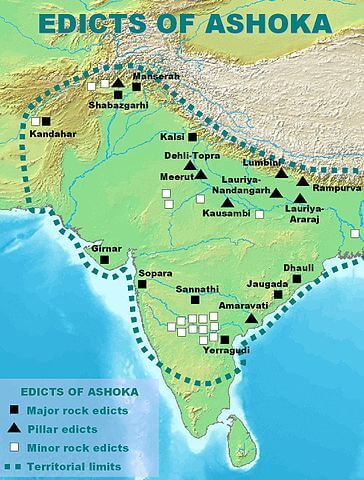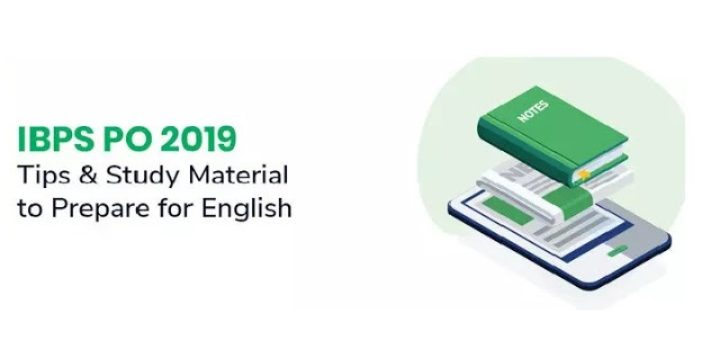Ancient India: Maurya and Post-Maurya Rulers – NCERT texts are a must read for every UPSC aspirant and are available for free download from ncert.nic.in website. Almost every UPSC topper has repeated the importance of reading NCERT school texts. These are texts which help to build the fundamentals. In this article, we will be dealing with the important points filtered out from NCERT school text for Standard 6 History. We plan to cover main points from NCERT texts for different classes and subjects in our future posts.
The reference material for this post is NCERT History text for Class 6 (Our past -1). Only main points from each chapter is compiled below. Our advice is to first go through the respective NCERT text and use this compilation then for quick revision.
Asoka, The Emperor
- The Mauryas were a dynasty, more than 2300 years ago, with three important rulers — Chandragupta[founder], his son Bindusara, and Bindusara’s son, Ashoka.
- Chandragupta was supported by a wise man named Chanakya or Kautilya. Many of Chanakya’s ideas were written down in a book titled Arthashastra.
- Megasthenes was an ambassador who was sent to the court of Chandragupta by the Greek ruler of West Asia named Seleucus Nicator.
- Ashoka was one of the greatest rulers known to history and on his instructions inscriptions were carved on pillars, as well as on rock surfaces.
- Most of Ashoka’s inscriptions were in Prakrit and were written in the Brahmi script.
- People in different parts of the empire spoke different languages.
RULING THE EMPIRE
- As the empire was so large, different parts were ruled differently.
- The area around Pataliputra was under the direct control of the emperor. This meant that officials were appointed to collect taxes.
- Spies were kept a watch on the officials.
- Other areas or provinces was ruled from a provincial capital such as Taxila or Ujjain.
- Here Royal Princes were often send as governors, local customs and rules were followed.
ASHOKA’S DHAMMA
- After Kalinga[current coastal Odisha] he gave up war.
- He started to execute Dhamma[prakrit term for Dharma]
- Ashoka’s dhamma did not involve worship of a god, or performance of a sacrifice. He felt its his duty to instruct his subjects through teachings of Budhha.
- He appointed officials, known as the dhamma mahamatta who went from place to place teaching people about dhamma.
- Besides, Ashoka got his messages inscribed on rocks and pillars, instructing his officials to read his message to those who could not read it themselves.
- Also sent messengers to spread ideas about dhamma to other lands, such as Syria, Egypt, Greece and Sri Lanka.
GREAT WALL OF CHINA
- Somewhat before the time of the Mauryan empire, about 2400 years ago, began to built this wall.
- It was meant to protect the northern frontier of the empire from pastoral people.
- Additions to the wall were made over a period of 2000 years because the frontiers of the empire kept shifting.
Vital Villages, Thriving Towns
- The use of iron began in the subcontinent around 3000 years ago.
- The kings and kingdoms could not have existed without the support of flourishing villages.
- Some of the earliest works in Tamil, known as Sangam literature, were composed around 2300 years ago. These texts were called Sangam because they were supposed to have been composed and compiled in assemblies (known as sangams) of poets that were held in the city of Madurai.
- Jataka s were stories that were probably composed by ordinary people, and then written down and preserved by Buddhist monks.
- We have hardly any remains of palaces, markets, or of homes of ordinary people. Perhaps some are yet to be discovered by archaeologists.
- Another way of finding out about early cities is from the accounts of sailors and travellers who visited them.
- Crafts include extremely fine pottery, known as the Northern Black Polished Ware. It is generally found in the northern part of the subcontinent, so the name. It is usually black in colour, and has a fine sheen.
- Many crafts persons and merchants now formed associations known as shrenis.
- These shrenis of crafts persons provided training, procured raw material, and distributed the finished product.
- Shrenis also served as banks.
Traders, Kings and Pilgrims
- Sangam poems mention the muvendar. This is a Tamil word meaning three chiefs, used for the heads of three ruling families, the Cholas, Cheras, and Pandyas. They became powerful in south India around 2300 years ago.
- Each of the three chiefs had two centres of power: one inland, and one on the coast. Of these six cities, two were very important: Puhar or Kaveripattinam, the port of the Cholas, and Madurai, the capital of the Pandyas.
- The chiefs did not collect regular taxes. Instead, they demanded and received gifts from the people.
- Around 200 years later a dynasty known as the Satavahanas became powerful in western India.
- The most important ruler of the Satavahanas was Gautamiputra Shri Satakarni.
- He and other Satavahana rulers were known as lords of the dakshinapatha, literally the route leading to the south.
SILK ROUTE & KUSHANS
- Some people from China who went to distant lands on foot, horseback, and on camels, carried silk with them. The paths they followed came to be known as the Silk Route.
- Some kings tried to control large portions of the route. This was because they could benefit from taxes, tributes and gifts that were brought by traders travelling along the route. In return, they often protected the traders who passed through their kingdoms from attacks by robbers.
- The best-known of the rulers who controlled the Silk Route were the Kushanas, who ruled over central Asia and north-west India around 2000 years ago.
- Their two major centres of power were Peshawar and Mathura. Taxila was also included in their kingdom.
- During their rule, a branch of the Silk Route extended from Central Asia down to the seaports at the mouth of the river Indus, from where silk was shipped westwards to the Roman Empire.
- The Kushanas issued gold coins. These were used by traders along the Silk Route.
Spread of Buddhism
- The most famous Kushana ruler was Kanishka, who ruled around 1900 years ago.
- He organised a Buddhist council, where scholars met and discussed important matters.
- Ashvaghosha, a poet who composed a biography of the Buddha, the Buddhacharita, lived in his court. He and other Buddhist scholars now began writing in Sanskrit.
- A new for m of Buddhism, known as Mahayana Buddhism, now developed.
- Here it got 2 distinct features: (1) earlier, the Buddha’s presence was shown in sculpture by using certain signs. Now statues are made. From Mathura and Taxila. (2) regarded with belief in Bodhisattvas. Earlier once they attained Enlightenment they could live in complete isolation and meditate in peace. Now they remained in the world to teach and help other people. This type of worship prvailed throughout Central Asia, China, and later to Korea and Japan.
- Traders probably halted in cave monasteries during their travels.
- The older form of Buddhism, known as Theravada Buddhism was more popular in areas like Sri Lanka, Myanmar, Thailand, and other parts of Southeast Asia including Indonesia.
- The famous Chinese Buddhist pilgrims were Fa Xian, who came to the subcontinent about 1600 years ago, Xuan Zang came around 1400 years ago and I-Qing, who came about 50 years after Xuan Zang.
BHAKTI
- The worship of certain deities, which became a central feature of later Hinduism, gained in importance were the contemporaries of other religion
- Anybody, whether rich or poor, belonging to the so-called ‘high’ or ‘low’ castes, man or woman, could follow the path of Bhakti.
- The idea of Bhakti is present in the Bhagavad Gita.
- Those who followed the system of Bhakti emphasized devotion and individual worship of a god or goddess, rather than the performance of elaborate sacrifices
- Once this idea gained acceptance, artists made beautiful images of these deities.



